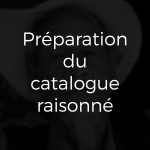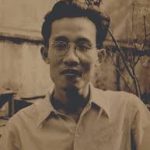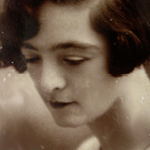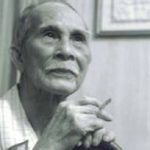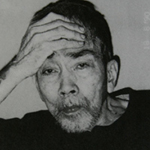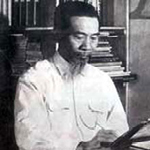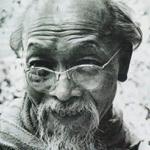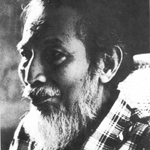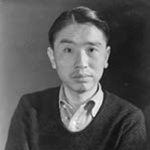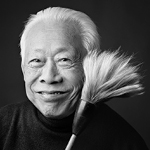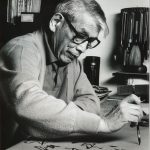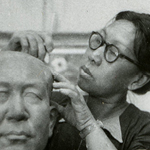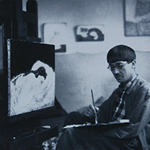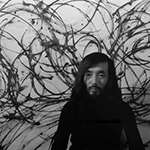Indochina School of Fine Arts
In the 20th century, a huge movement seeking modernism spread like wildfire from China to Japan and the Indochina School of Fine Arts played a full role in it.
Victor Tardieu, winner of the Indochina Prize, received a scholarship allowing him to travel for two years. A graduate of the École des Beaux-Arts de Lyon and the Académie Julian and the École des Beaux-Arts de Paris, he was in his fifties when he decided to undertake this journey. He set foot on the soil of present-day Vietnam in 1921. His arrival was an event for the French community and he soon became a firm favourite. He received a commission to paint a huge mural for the large lecture theatre at Hanoi University: a monumental undertaking that largely occupied the first six years of his Asian career. Yet he still found time to satisfy his passionate curiosity about the region’s history, ways, customs and traditions. Known for his extremely open and kindly nature, Tardieu befriended Nam Son when he was invited to the Annamese students’ hall of residence.

The two men shared the same dream. They both wanted to create art that was specific to Indochina, rooted in its traditions. He quickly wrote a report on this subject which he sent to the Governor-General of French Indochina, Martial Merlin[1]:
The country of Annam owes all its art forms to China. It was only gradually, during the first few centuries of our era, that Annamese artistic sensibilities awakened, and were nourished and refined by contact with the works that China imported or commissioned from its own artisans in Annam (…) At the beginning of the 13th century, the Annamese national rebirth seems to have provided a particular drive and original inspiration to the artists of this country (…). The concept of art was still what you might call Chinese in nature, but then Annamese art took on a character of its own which it maintained for a long time, through which – sometimes hesitant, often charming, always curious – this race’s own particular genius was given expression. This art developed naturally and most significantly between the 15th and 18th centuries, and many works demonstrated the accomplishments of Annamese artistic life during this period. The Annamese appear to have achieved their most perfect art forms at the beginning of the 19th century.
This is why he felt an Indochina School of Fine Arts needed to be created in Hanoi. He defended this project passionately to the Governor-General and, thanks to the personality and enthusiasm of the young Vietnamese painter Nguyen Van Tho, known as Nam Son, the school opened just as they both hoped, in 1925.
“This meeting changed the course of both Tardieu’s and Nam Son’s life, and certainly the fate of Vietnamese art along with it” wrote Ngo Kim-Khoi[2]

Based on the Western model, the school was organised around a diploma lasting first three and then five years and after the painting, sculpture and decorative arts departments, an architectural department was rapidly added. The Western teaching system enabled students to work in the studio in the morning, while taking theory classes the rest of the time. As well as these classes, Tardieu made art history obligatory: students studied Western art history in their first year, and Far Eastern art history for the next two. The very organisation of the school itself was an interesting synthesis of the colonial artistic period, where artists from Tonkin and Cochin China were driven by the same quest for identity and modernism upheld by Western artists. Nora Taylor was talking about a true miracle when she evoked the extraordinary union between French teachers and Vietnamese students that gave birth to Vietnam’s national art. In her eyes, the reason for this success lay in their goodwill and professional conscience alone[3].
“The Hanoi school aims to teach young Annamese artists a way of seeing and thinking that is congenial to them, without which they would just stray into something meaningless, while at the same time giving them a vast and eclectic culture that awakens their imagination and inspires them with a taste for something new,” said the founder[4].
Tardieu and Nam Son supported and encouraged the development of real careers by spreading the Western notion of an artist as an economically independent creator.
Victor Tardieu was the school’s first director. Following his suggestion, as early as 1925, the teachers were all winners of the Indochina Prize and held the post for one year in Hanoi. Thus teachers included the painter Joseph Inguimberty (from 1926 to 1945) and Alix Aymé, wife of General Georges Aymé, who revived the tradition of painting on lacquer. The sculptor Évariste Jonchère directed the school from 1938 to 1945. He was extremely controversial in wanting to introduce traditional craftsmanship into the school’s curriculum and because he did not conceal his anti-elitist leanings by opening the doors of the school to a wider range of applicants (in 1925, the administration had received more than 350 applications for 10 places).
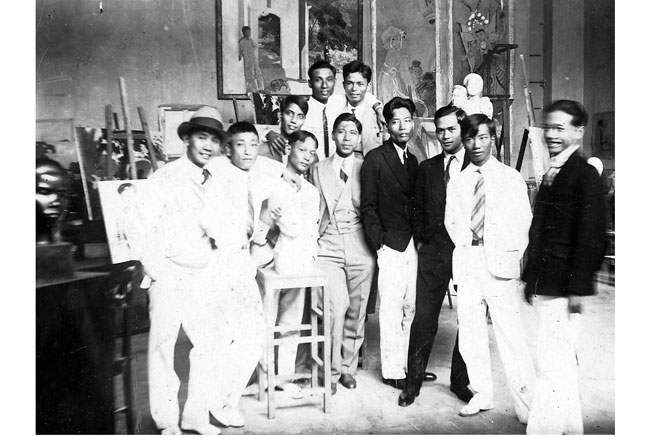
Before the Indochina War, the students’ works were largely imbued with 19th century French Romanticism; they lay midway between the classicism of the teaching they had received and elements reflecting the atmosphere of the time. Artworks were supposed to arouse emotion in the viewer, which the younger generation of painters managed to achieve by combining tradition and modernity to represent life in Indochina under colonial rule.
After Vietnam’s declaration of independence, the school moved and then closed temporarily, a victim of political machinations, then eventually became the Hanoi School of Fine Arts. Many artists, like Tran Van Can, chose the path of politically engaged art and put their brushes to work on behalf of nationalist propaganda. As a result, students’ works gradually moved away from European Romantic influence and towards more realistic social art.
Bibliography :
Paliard Pierre, Un art vietnamien : penser d’autres modernités. Victor Tardieu’s project for the Indochina School of Fine Arts in Hanoi in 1924, L’Harmattan, Poland, 2016
[1] On the teaching of Fine Arts in Indochina and the creation of a Central College of Drawing in Hanoi
[2] Nam Son, from disciple to master: exhibition catalogue for “From the Red River to the Mekong “, Visions of Vietnam”, Cernuschi Museum, 20 September, 2012 – 27 January, 2013, Paris, 2012, p. 40
3] Nora Taylor, Painters in Hanoi, An Ethnography of Vietnamese Art, University of Hawaii’s Press, Honolulu, 2004, p. 31: “It was a miracle that school opened by the French who taught there could train a generation of Vietnamese artists capable of building national plastic arts for Vietnam. This miracle could be accomplished only by true artists full of good will and professional conscience”
[4] The Indochina School of Fine Arts, report composed in 1931, p.18-19 (INHA Library, Fonds Tardieu)
More information by clicking on the photos
Are you the owner of archive material or additional material about Asian painters, or would you like one of your works assessed ? Contact us

